We all endure hard, stressful jobs. Jobs that make you feel like you’re suffocating from the pressure around you. But it’s hard to imagine a more stressful job than the position 33rd President Harry Truman found himself in with a nation in mourning, and at war. President Franklin D. Roosevelt died unexpectedly only eighty-two days after his fourth inauguration, leaving the seat of the most powerful position in the world open for the political newcomer from Missouri. Truman found himself at odds with the impossible choices in the deadliest war in history, dubbing his first year as President as a “year of decisions.”1 Many such decisions included the decision to drop two weapons of mass destruction, weapons that devastated Japan’s cities of Nagasaki and Hiroshima: The Manhattan Project. This is the story of how Truman came to make this fateful decision that altered the course of history.
Our story takes place near the conclusion of World War II, in which Germany and Italy have both surrendered to Western forces, with both Mussolini and Hitler dead. All that remained was Japan in the Pacific Theater, in a brutal conflict with America. Unlike European forces, Imperial Japan proved extremely resilient to any form of aggression with refusals to surrender. With a vastly different approach to war than its European allies, Imperial Japan was able to hold out as it saw self-sacrifice as the ultimate accomplishment. This encouraged brutal fighting styles like the kamikaze showed. According to author and BBC correspondent David Powers, “They were indoctrinated from an early age to revere the Emperor as a living deity, and to see war as an act that could purify the self, the nation, and ultimately the whole world. Within this framework, the supreme sacrifice of life itself was regarded as the purest of accomplishments.”2 Simply put, Japan and its empire didn’t want to go down without a bloody fight.
Before President Roosevelt’s passing, Truman served as Roosevelt’s vice president, but even as a vice president, Truman was not offered the luxuries of being let in on the top government secrets that were in action between Roosevelt and officials. Little did Truman know that Roosevelt was working on the most destructive weapon ever created. Once in office, Truman was briefed. Henry L. Stimson, the Secretary of War who accompanied Roosevelt and Truman, recalls that briefing: “The next time I went to the White House to discuss atomic energy was April 25, 1945, and I went to explain the nature of the problem to a man whose only previous knowledge of our activities was that of a Senator who had loyally accepted our assurance that the matter must be kept a secret from him. Now he was President and Commander-in-Chief, and the final responsibility in this as in so many other matters must be his. President Truman accepted this responsibility with the same fine spirit that Senator Truman had shown before in accepting our refusal to inform him.”3
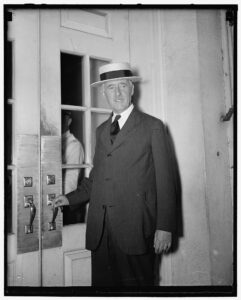
Truman was open to options. But what was being proposed as an alternative to the Manhattan Project shook Truman. Operation Downfall was a planned operation that served as the invasion of Japan. According to author and historian Evan Thomas in his gripping tale of the figures involved in Japan’s surrender, “More than twenty-five years later, in July 1945, as he enters his third month as president, Truman is appalled by the American casualties (dead and wounded) on the embattled island of Okinawa—fifty thousand and counting. Now the Pentagon is proposing Operation Downfall, the invasion of Japan… …Truman knows that the Japanese homeland will be defended by fight-to-the-end soldiers holed up in caves, kamikaze suicide planes, and, reportedly, women and children armed with pitchforks. The Battle of Japan will be, as he puts it, ‘Okinawa from one end of Japan to the other.'”4
With an extreme lack of experience, Truman relied on the advisors left behind by Roosevelt. With casualties racking up, the options of invasion and extensive bombing campaigns felt fruitless to Truman. He learned about its devastating effects on a populous center and discussed the bomb and its future with his predecessor’s advisors. They talked about the bomb not as a question of whether or not, but how it affected the post-war effort. Talks also took place about how the bomb would be dropped and whether to warn Japan or not. After serious consideration by Truman and his advisors, they decided against warning Japan of a weapon of mass destruction because they couldn’t know if they would drop a dud or not, raising Japanese morale.5
Meanwhile, big developments were occurring in the Manhattan Project, as progress was on a rapid pace. This allowed for the Trinity test, the world’s first nuclear test and nuclear explosion. The US tested the bomb in a remote site in Los Alamos, New Mexico. Reports from witnesses came from as far as 200 miles away. According to the Air Force Nuclear Weapons Center, “A forest ranger 150 miles west of the blast said he saw a flash of fire, an explosion and black smoke. An individual 150 miles north said the explosion ‘lighted up the sky like the sun’… …The success of the Trinity test meant an atomic bomb could be used by the U.S. military and it marked the start of the Atomic Age.”6 The development of the project can be attributed to brilliant minds working on it, such as J. Robert Oppenheimer, who was later famously haunted by his creation. Nonetheless, this marked a big step for the project and increased the appeal to Truman and his cabinet, knowing it could work.
With news coming in showing positive results for the project’s success, debate ensued on whether to warn Japan or not, and what an unconditional surrender could look like. Joseph Grew, an undersecretary, argued to Truman and his advisors that a policy change should occur from the Roosevelt-era policy of an unconditional Japanese surrender to instead leaving Japan’s emporer as the main government of Japan in exchange for surrender. This was one of Truman’s toughest debates as it uneased his tendencies to stick with his predecessor’s policies at all costs. Sympathetic to Grew, he told him to hold off until a meeting with the allied forces in Potsdam, with the United Kingdom and the Soviet Union. Truman and Stimson also soon accepted the call for a prompt warning before the bomb droppings after learning of recent attempts within Japan for peace.7
Truman arrived in Potsdam, Germany, to discuss the ongoing war and post-war efforts by the powerful forces of the UK and the USSR. He also broke the news of the Manhattan Project to the Allies. In Truman’s secret diary during the Potsdam conference, he wrote, “Discussed Manhattan (it is a success.) Decided to tell Stalin about it… …Believe Japs will fold before Russia comes in. I am sure they will when Manhattan appears over their homeland. I shall inform Stalin about it at opportune time.” In another excerpt, he writes, “The weapon is to be used against Japan between now and August 10th. I have told the Sec. of War Mr Stimson to use it so that military objectives and soldiers are the target and not women and children. Even if the Japs are savages, ruthless, merciless and fanatic, we as the leader of the world for the common welfare cannot drop this terrible bomb on the old Capital [Kyoto] or the new [Tokyo]. He & I are in accord. The target will be a purely military one and we will issue a warning statement asking the Japs to surrender and save lives. I’m sure they will not do that, but we will have given them the chance. It is certainly a good thing for the world that Hitler’s crowd or Stalin’s did not discover this atomic bomb. It seems to be the most terrible thing ever discovered, but it can be made the most useful.”8
What resulted from Potsdam was a joint declaration with the UK and China calling for an unconditional surrender, putting an end to internal debate over the institution of the empire. The stage was set, with Japan facing an ultimatum: a complete unconditional surrender with zero guarantees of an imperial Japan surviving, or facing weapons of mass destruction. As Truman predicted, they found an unwavering Japan, unwilling to surrender. Truman, left with no clean options, was set on dropping the bombs.9
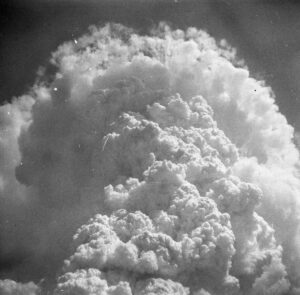
On August 6, 1945, a B-29 bomber named Enola Gay flew to the target city of Hiroshima, with a population of almost 300,000 and about 43,000 soldiers, a massive military center. Atomic bomb “Little Boy,” a 9,700-pound uranium bomb, was dropped. Massive destruction ensued, engulfing people and buildings within its radius in a firestorm. Vague reports came in from the Empire, with communication with Hiroshima being cut off. Japanese pilots would come to survey the damage done with the mushroom cloud on top. It’s estimated 70,000 likely died from the initial blast, with a death toll anywhere from 100,000-200,000 from the effects of radioactive fallout. “By August 9th, American aircraft were showering leaflets all over Japan informing its people that ‘We are in possession of the most destructive explosive ever devised by man. A single one of our newly developed atomic bombs is actually the equivalent in explosive power to what 2,000 of our giant B-29s can carry on a single mission. This awful fact is one for you to ponder and we solemnly assure you it is grimly accurate. We have just begun to use this weapon against your homeland. If you still have any doubt, make inquiry as to what happened to Hiroshima when just one atomic bomb fell on that city.'”10
On August 9, a plutonium implosion bomb named “Fat Man” was prepared for dropping. A B-29 named Bock’s Car was forced to drop the bomb on the city of Nagasaki, as a lack of fuel limited the original choice of Kokura. A landscape of destruction not unlike what was seen in Hiroshima: it’s estimated that 40,000 people died initially, with the number sharply increasing over the years.11 A Japanese surrender offer reached Washington that requested the retention of the Emporer. Truman granted that request, with a condition that the Emporer would be subject to the authority of the allied powers, breaking away from the unconditional surrender policy. Truman was relieved the war was finally over, with disdain at the thought of dropping a third bomb. Once he received images of the destruction caused by the two previous bombs, the thought of a third bomb and the death of more children was too much, and not worth deposing Hirohito.12
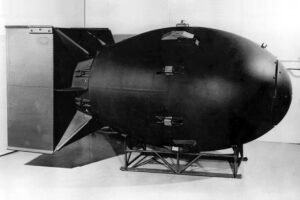
And thus, World War II was over. The bloodiest war in human history, with countless atrocities committed, and atrocities committed to stop more brutality. It was time for the world to rebuild and heal. Truman went on to serve the rest of his presidency as a post-war president, building the future of American foreign policy for generations to come. The atomic bomb was one of the most contentious moral debates in American history, and became a fiercely debated topic to this day. Regardless of how one may feel and think of Truman’s actions, it is undeniable he went through one of the hardest decisions one could ever experience. All we can hope for now is that it was the last decision of that magnitude in our history.
- “Biographical Sketch: Harry S. Truman, 33rd President of the United States | Harry S. Truman,” The Truman Library (website), https://www.trumanlibrary.gov/education/trivia/biographical-sketch-harry-truman. ↵
- David Powers, “BBC – History – World Wars: Japan: No Surrender in World War Two,” BBC online, https://www.bbc.co.uk/history/worldwars/wwtwo/japan_no_surrender_01.shtml. ↵
- Henry Stimson, “The Harper’s Magazine Article from 1947, ‘The Decision to Use the Atomic Bomb’ by Henry Stimson, to Accompany Peter Frost’s Article, ‘Teaching Mr. Stimson.,’” Association for Asian Studies, March 30, 2006, https://www.asianstudies.org/publications/eaa/archives/the-harpers-magazine-article-from-1947-the-decision-to-use-the-atomic-bomb-by-henry-stimson-to-accompany-peter-frosts-article-teaching-mr-stimson/. ↵
- Evan Thomas, Road to Surrender : Three Men and the Countdown to the End of World War II (Random House, 2023), 54. ↵
- Barton J. Bernstein, “Roosevelt, Truman, and the Atomic Bomb, 1941-1945: A Reinterpretation,” Political Science Quarterly 90, no. 1 (1975): 36, 39, https://doi.org/10.2307/2148698. ↵
- “Trinity: World’s First Nuclear Test,” Air Force Nuclear Weapons Center, https://www.afnwc.af.mil/About-Us/History/Trinity-Nuclear-Test/. ↵
- Barton J. Bernstein, “Roosevelt, Truman, and the Atomic Bomb, 1941-1945: A Reinterpretation,” Political Science Quarterly 90, no. 1 (1975): 54, 55, 56, https://doi.org/10.2307/2148698. ↵
- “Truman’s Potsdam Diary,” National Security Archive, https://nsarchive.gwu.edu/document/28466-document-47-trumans-potsdam-diary. ↵
- Jasmine Owens, “Japan’s Surrender,” Outrider, https://outrider.org/nuclear-weapons/articles/japans-surrender. ↵
- “Manhattan Project: The Atomic Bombing of Hiroshima, August 6, 1945,” https://www.osti.gov/opennet/manhattan-project-history/Events/1945/hiroshima.htm. ↵
- “Manhattan Project: The Atomic Bombing of Nagasaki, August 9, 1945,” https://www.osti.gov/opennet/manhattan-project-history/Events/1945/nagasaki.htm. ↵
- “The Decision to Use the Atomic Bomb | WWII, Hiroshima & Nagasaki | Britannica,” https://www.britannica.com/topic/Trumans-decision-to-use-the-bomb-712569. ↵
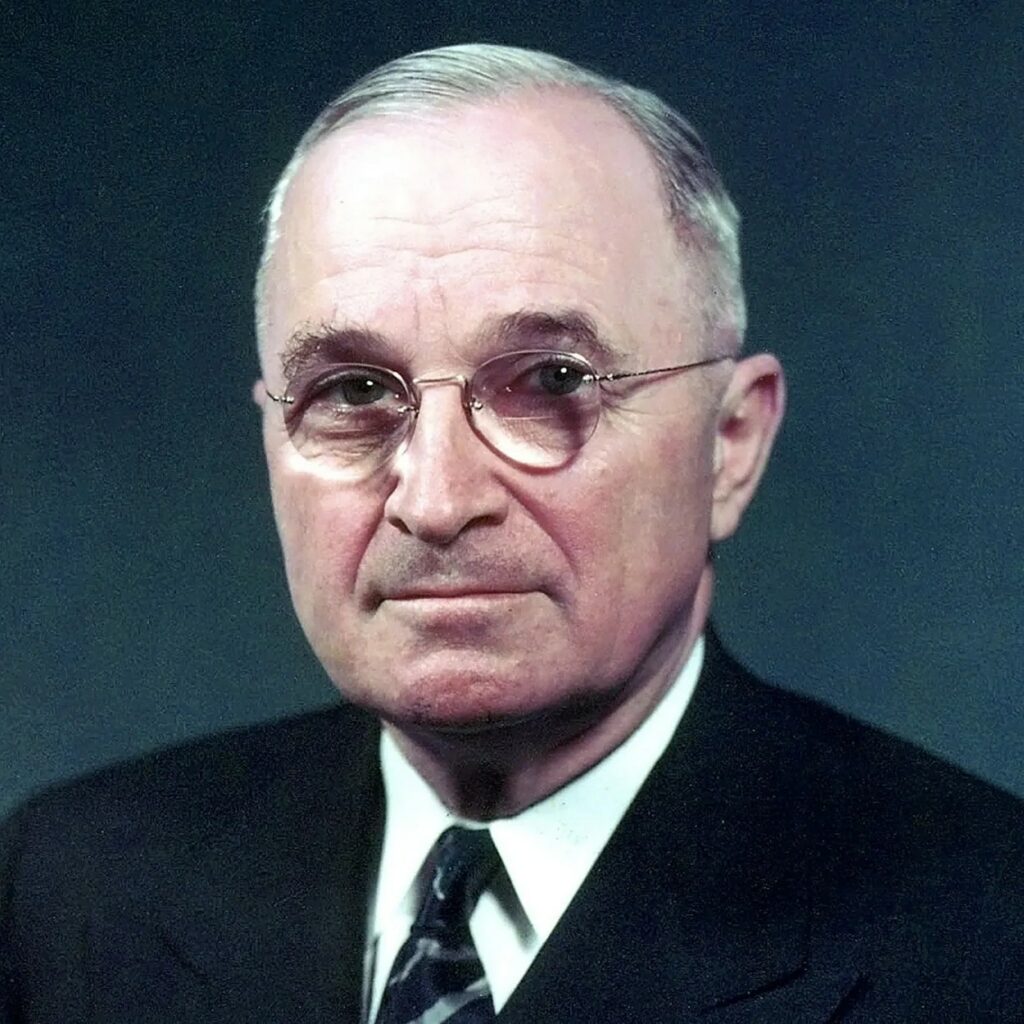
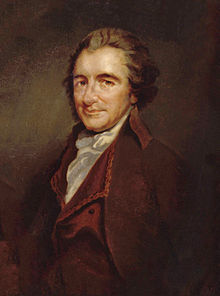
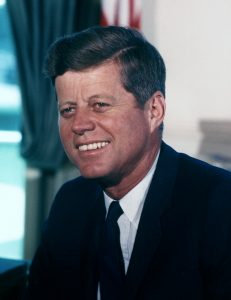
3 comments
Lauren Sahadi
This was a really good article on President Truman’s decision to deploy atomic bombs, which brought an end to World War II. I love reading about wars and what went on, so this was a really easy read. It was a very great story and I think you did at great job at telling it. This was a pivotal moment in history and it was an amazing article on this subject matter.
Silvia Benavides
President Truman must feel some sort of guilt acknowledging the pain and suffering caused by the atomic bomb. Conversations about atomic bombs always make me nervous and make me think about the ramifications that will follow for generations to come.
Gaitan Martinez
I can’t imagine how President Truman must’ve felt, although he may not personally know anyone that perished during the atomic bombing, still it must’ve been a thought that lingered in his mind that was one of the main people responsible for the deaths of countless innocent civilians, even children! I know there weren’t many options, but still innocent civilians had to be sacrificed? However, if I were put into the office, I’d have no idea what to do, probably the same as Truman, go with whatever Roosevelt’s advisors advise. I think we all like to imagine there was a different way, but maybe there wasn’t? All we could hope now is that we never have to use it again.